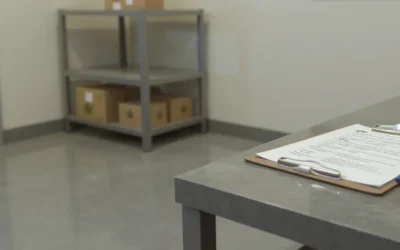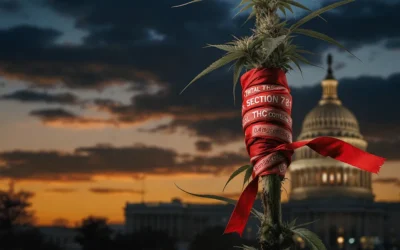Hello there,
I’m a graduate student at Northern Michigan University working with Dr. James DeDecker and others on a study of potential biocontrols for hemp diseases. We are looking for controls of both gray (Botrytis cinerea) and white (Sclerotinia sclerotiorum) molds and are hoping to collect samples of some of the molds that are currently showing up in hemp fields. If you notice gray or white fungal growth on your hemp plants (usually showing up on the stem or buds around or after harvest) could you cut some of that plant tissue off and place it in a paper bag? If you notice any white mold sclerotia, which look like rat droppings, you can send those too.
Please include a sample submission form from the U of I Plant Clinic. The bagged samples should be stored in a cool area or refrigerator before being placed in a sealed plastic bag and an envelope or mailer and sent to the U of I Plant Clinic.
Please include a copy of your hemp grower license and a note stating that the contents are industrial hemp to avoid any confusion.
Thank you for your help and hope you have a good season,
Duncan Muter
Thanks to a USDA-NIFA Supplemental and Alternative Crops (SAC) grant, industrial hemp fiber and grain producers in Illinois, Indiana, Michigan, and Wisconsin can submit hemp samples to the University of Illinois Plant Clinic in 2023-25 for pest and disease identification at no charge.
What sort of sample should I submit? In spring, entire seedlings can be submitted. Later in the growing season leaves, stems, flowers and/or seedheads showing symptoms or entire plants can be submitted.
When should samples be taken? When symptoms are first noted.
How should I store samples? Samples should be collected and stored in bags or wrapped in newspaper. Do not seal plastic bags until ready to ship, and please do not include wet paper towels with samples. Samples should be shipped as soon as possible after collection. If you must wait a day or two before shipping, samples should be kept cool (around 40° F) in a refrigerator. Insect and arthropod samples can be stored in vials of rubbing alcohol.
How should they be shipped? Samples should be sent in sealed plastic bags and kept cool during transit. Ship early in the week to avoid weekends. Include an ice pack or ship overnight during hot weather if possible.
A completed sample submission form should be included with each sample. The form is available here: https://extension.illinois.edu/plant-clinic/forms under “free hemp samples.” Pictures showing plant symptoms and field distribution can be emailed to esmabo@illinois.edu as additional background for submitted samples.
“We collect good samples when…”:
•The best plant tissues for diagnosis are the ones showing the symptoms in various stages of development
•Avoid entirely dead plants or plant parts
•Collect the entire plant whenever possible
•Provide as much background information as possible on the sample form
By participating in this service, you’re helping researchers get a better understanding of what diseases and pests are affecting field hemp production. This information is critical to developing better management practices to protect your yield. Thank you for your support!
This work is supported by the National Institute of Food and Agriculture Supplemental and Alternative Crops program [Award No.
2022-38624-38368] from the United States Department of Agriculture.





